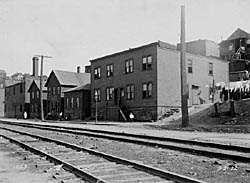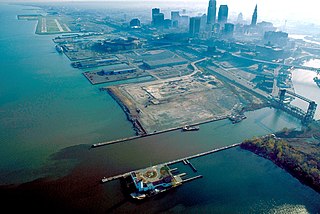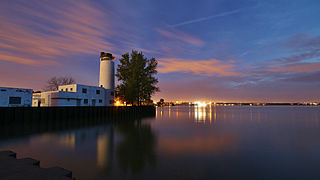 W
WThe Cleveland metropolitan area, or Greater Cleveland as it is more commonly known, is the metropolitan area surrounding the city of Cleveland in Northeast Ohio, United States. According to 2018 United States Census estimates, the five-county Cleveland–Elyria Metropolitan Statistical Area (MSA) consists of Cuyahoga County, Geauga County, Lake County, Lorain County, and Medina County, and has a population of 2,057,009 making Greater Cleveland the 33rd most populous metropolitan area in the United States, the third largest metro area in Ohio, and the second largest metro area, behind Columbus, entirely in Ohio. Greater Cleveland is part of the larger Cleveland–Akron–Canton Combined Statistical Area and its 3.5 million residents make it the largest Ohio metro in the 59 million giant Great Lakes Megalopolis.
 W
WEast 105th Street and Euclid Avenue was at one time the most famous intersection in the city of Cleveland, Ohio. The legendary commercial junction consists of several blocks from East to West between 107th Street and 105th Street.
 W
WFrom its founding in 1796, Cleveland's population grew to 796,841 in 1920, making it the fifth largest city in the United States at the time. By 1930, the population rose to 900,429 and, after World War II, it reached 914,808. Due to various historical factors including deindustrialization, suburbanization, and urban sprawl, Cleveland's population began decreasing in the 1960s. By 1980, the city's population was 573,822 and it had lost its position as one of the top 10 largest cities in the U.S. By 2019, the population had further fallen to 381,009. Beginning in 2018, the city's population began to flatten, after decades of decline. Additionally, since 2010, some neighborhoods within Cleveland, notably Downtown, have begun seeing a population increase.
 W
WNASA John H. Glenn Research Center at Lewis Field is a NASA center, located within the cities of Brook Park and Cleveland between Cleveland Hopkins International Airport and the Rocky River Reservation of Cleveland Metroparks, with a subsidiary facility in Sandusky, Ohio. Its director is Marla E. Pérez-Davis. Glenn Research Center is one of ten major NASA facilities, whose primary mission is to develop science and technology for use in aeronautics and space. As of May 2012, it employed about 1,650 civil servants and 1,850 support contractors located on or near its site.
 W
WIrishtown Bend is the name given to both a former Irish American neighborhood and a landform located on the Flats of the west bank of the Cuyahoga River in the city of Cleveland in the U.S. state of Ohio in the United States. The landform consists of a tight meander in the Cuyahoga River, and the steep hillside above this meander.
 W
WNorth Coast Harbor is a district in downtown Cleveland, Ohio on the shore of Lake Erie. The district serves as the home of the Great Lakes Science Center, the Rock and Roll Hall of Fame and Museum, FirstEnergy Stadium, the Steamship William G. Mather Maritime Museum, USS Cod, Burke Lakefront Airport, Voinovich Bicentennial Park, and the Cleveland-Cuyahoga County Port Authority. It is served by the West 3rd and North Coast stations on RTA's light rail Waterfront Line.
 W
WThe Port of Cleveland is a bulk freight shipping port at the mouth of the Cuyahoga River on Lake Erie in Cleveland, Ohio, United States. It is the third-largest port in the Great Lakes and the fourth-largest Great Lakes port by annual tonnage.
 W
WWhiskey Island is a peninsula at the mouth of the Cuyahoga River at Lake Erie in Cleveland, Ohio. Its current configuration was created in 1827 when the river's mouth was moved to its present location. The western half of Whiskey Island is occupied by the Cleveland Bulk Terminal. The eastern section is home to a marina and public park, known as Wendy Park, which forms part the Lakefront Reservation of the Cleveland Metroparks. The peninsula is 1 mile (1.6 km) long and 0.3 miles (0.48 km) at its widest, bounded by Lake Erie to the north, West 54th Street on the west (roughly), and the Cuyahoga River to the south and east.